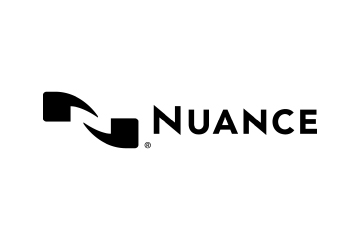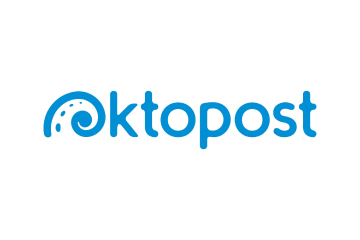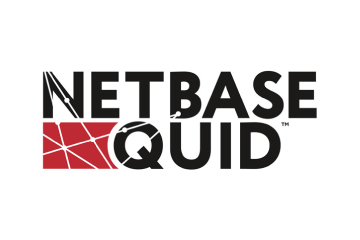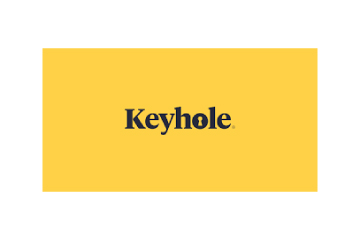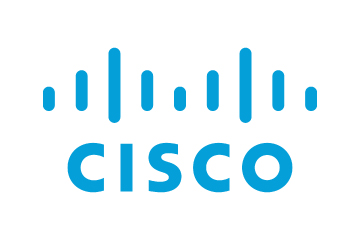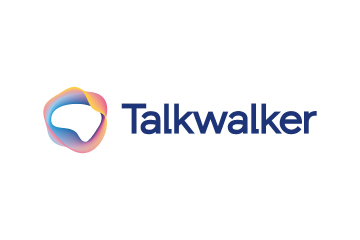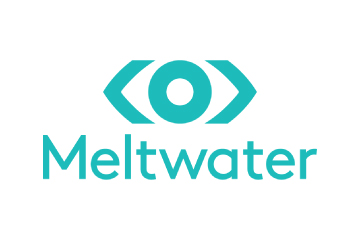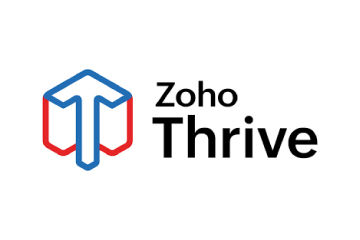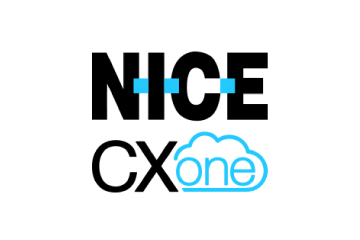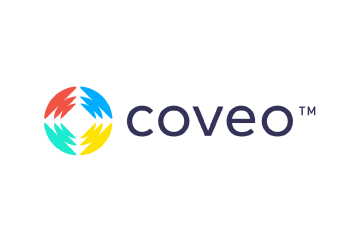Jamie Thorpe, Chief Experience Officer at Ipsos, discusses how companies can remain agile and adaptable in the face of changing customer expectations and evolving industry dynamics.
“Embed the forces of CX into your business and continually monitor them – remember that customers don’t always compare you against your competitors; they’re often comparing your service against brands in completely different sectors, so cross-industry benchmarking is important,” says Jamie Thorpe, Chief Experience Officer at Ipsos.
Considering the banking industry, Jamie adds, “Look outside the financial services and retail banking sectors and closely examine the experiences that others are offering your customers – understand what makes them great (or not). Because that’s what your customers are comparing you to and using as a benchmark. Take note of your ‘experience competitors’”
He believes the key to unlocking investment is having a clear picture of the return on customer experience investment. Above all, organisations must be prepared to evolve and pivot as digital CX is moving rapidly.
Jamie is a seasoned CX, Research and Engagement professional and has been partnering with clients across all industries for over twenty-five years, developing solutions to meet their needs and driving actionable intelligence into business. His expertise is recognised and valued within supplier and client communities alike.
Talking to CXM Today, Jamie discusses how companies stay agile and adaptable in the face of changing customer expectations and evolving industry dynamics. He also gives a clear picture of the future of customer segmentation evolving to meet personalisation expectations.
Excerpts from the interview:
How do you approach understanding the emotional drivers behind consumer behaviour to help build more authentic connections?
Firstly, we ask customers what matters to them in various ways and through their preferred channels. And when we do, we know there’s still plenty of scope for improvement. For example, in a multi-industry study we did with Engage Business Media last year, we found that only 42% of experiences were pleasing or delighting customers. That means over half of them were less than great!
At Ipsos, we use a proprietary framework based on behavioural science (the Ipsos Forces of Customer Experience) to understand how people feel at different touchpoints along the customer journey. This gives our clients a clear understanding of how well, or not, they are meeting their customers’ emotional needs and expectations. We bring the best of Ipsos to each client solution, often incorporating various techniques, including qualitative and quantitative interviews, consumer and market trends, ethnography and behavioural science.
We then work with our clients to benchmark performance and implement any required service design changes. This allows them to drive stronger customer relationships, which results in elevated CX KPIs and improved financial performance.
How can companies stay agile and adaptable in the face of changing customer expectations and evolving industry dynamics?
Keep talking to customers, and keep doing CX properly! All organisations need to understand their current levels of CX maturity across the business – even where some areas are leading, there may be gaps in others – and make a plan!
Customers want to be known, heard and valued;
- Use all available sources to examine the signals customers are sending (through their footprint, actions, and behaviours), and use predictive models to guide them to the next best action.
- Embed the forces of CX into your business and continually monitor them – remember that customers don’t always compare you against your competitors; they’re often comparing your service against brands in completely different sectors, so cross-industry benchmarking is important.
- If you want to be flexible and prepared to evolve quickly, bring siloed internal teams together –sharing information and collaborating on shared goals is powerful stuff
How does Ipsos navigate the complexities of gathering and analysing data to provide actionable insights for clients?
We’ve years of experience and expertise in doing it – and I don’t just mean me, either! We have a large multi-disciplinary team of CX experts, including a specialist tech team, covering everything for a modern end-to-end approach to CX. And, of course, we’re part of a long-established global research business – gathering and analysing data is what we do.
Obviously, data insights aren’t enough on their own: we help our clients to apply the principles of performance improvement (communicate, educate, measure, reward) at whatever stage they’re at in their CX journey. That might mean drilling down into the information to discover the ‘why’ something is happening to work out the action that needs to be taken to improve. Or using storytelling to share the all-important ‘why’ behind any changes being made.
Our clients value bringing together and democratising valuable data so that everyone can see and understand the big picture (and what’s in it for each person or team). This makes a huge difference to how effectively new behaviours and practices, such as action planning and closed loop, can be activated and embedded at the front line.
The demand for personalised experiences is growing rapidly. How do you envision the future of customer segmentation evolving to meet these expectations?
It depends on how you segment people, that’s for sure. It’s easy to talk about Millennials and Boomers, but as has been pointed out many times, the reality is much more complicated, and one of the reasons why segmentation is evolving into personalisation. Companies now need to bring data together from all corners of their business – survey data, CRM, demographics and more – as interactions will increasingly be based on a single view of the customer (sounds familiar!). However, understanding the data is one thing, and acting on it is another. Engaging and activating the teams and harnessing technology for maximum impact is another subject that many organisations are grappling with at the moment.
There’s also an interesting dynamic between the brands harvesting data and the consumers now recognising its value. Sure, people will want to be careful about how much information companies hold on them, but this understanding also leads to raised expectations: “I’m a returning customer, you should know me”. It’s also about context. When your shoe retailer asks what size your feet are, that’s fine. But if your bank asks you, that probably isn’t. OK, that’s an exaggeration, but consumers really do want to be known and understood because this relates to their needs: being served with the right ad or product at the right time can be a great experience. Brands that fail to know their customers and those that appear to know too much can generate dissatisfaction. It’s a fine line.
Naturally, the challenge for brands is how to execute on this demand for consumer personalisation, and AI and automation—used correctly—will be fantastic tools to deliver on this. The trajectory is only going in one direction; customer expectations will continue to increase, so companies need to keep pace. At the moment, we’re only just scratching the surface of what’s possible—getting personalisation right will fast become table stakes.
What advice would you give to traditional banks who are trying to excel in digital CX, and how can they ensure they are making the most of their efforts in this area?
Look outside the financial services and retail banking sectors and closely examine the experiences others offer your customers – understand what makes them great (or not). Because that’s what your customers are comparing you to and using as a benchmark. Take note of your “experience competitors”!
Once you’ve done that, you need to be honest about where you are and work out a realistic plan for the future that you can publish and actually achieve. And for goodness’ sake, invest in that plan – don’t try it on a shoestring! Customers notice when brands invest heavily in marketing, and they’ll quickly tell you that their experiences with you matter much more than any advertising – read the room.
Often, traditional banks are juggling a tech stack, including new front-end systems and legacy back-end technologies, the latter of which means some initiatives go on the ‘too difficult to achieve right now’ pile. Brands must be realistic in developing long-term technical transformational strategies and overlaying that with smaller ‘workaround’ solutions that still deliver gains for brands and customers alike.
The key to unlocking investment is a clear picture of the return on your customer experience investment. Above all, be prepared to evolve and pivot—digital CX is moving rapidly.
If you had to make one prediction on the future of the CX team in the context of genAI revolution?
Currently, most CX professionals don’t know what to do with AI. But as demand continues to grow at pace, this will change. The number of use cases is growing exponentially, and it’s a very exciting time to work in our industry.
For me, the CX team has to continue to be the core. I predict that brands that embrace modern end-to-end CX properly will continue growing their teams and seeing the real benefits. While AI is a valuable tool, the role of CX teams in an organisation will become more important than ever.
Catch Jamie Thorpe at the 2nd Annual CX NXT – Customer Experience BFSI Summit, London, on July 10. For more details, visit here.










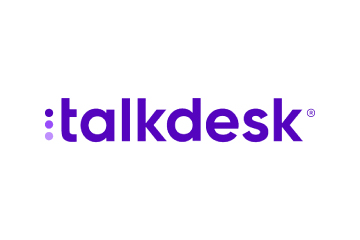




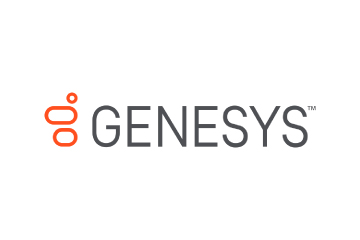



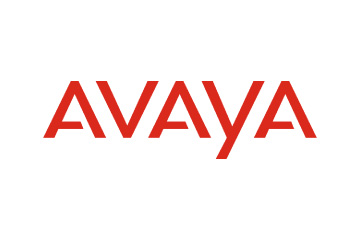
 Microsoft Dynamics 365 represents a robust cloud-based CRM solution with features such as pipeline assessment, relationship analytics, and conversational intelligence. It utilises AI-powered insights to provide actionable intelligence via predictive analytics, lead scoring, sentiment analysis, etc. Currently, Microsoft operates in 190 countries and is made up of more than 220,000 employees worldwide.
Microsoft Dynamics 365 represents a robust cloud-based CRM solution with features such as pipeline assessment, relationship analytics, and conversational intelligence. It utilises AI-powered insights to provide actionable intelligence via predictive analytics, lead scoring, sentiment analysis, etc. Currently, Microsoft operates in 190 countries and is made up of more than 220,000 employees worldwide. HubSpot is an inbound marketing, sales, and customer service software provider, offering robust CRM and automation solutions. Some of its products include Marketing Hub, Sales Hub, Operations Hub, Content Hub, Commerce Hub, Marketing Analytics and Dashboard Software. Guided by its inbound methodology, HubSpot enables companies to prioritise innovation and customer success.
HubSpot is an inbound marketing, sales, and customer service software provider, offering robust CRM and automation solutions. Some of its products include Marketing Hub, Sales Hub, Operations Hub, Content Hub, Commerce Hub, Marketing Analytics and Dashboard Software. Guided by its inbound methodology, HubSpot enables companies to prioritise innovation and customer success. Monday.com is a project management software company, offering a cloud-based platform that enables businesses
Monday.com is a project management software company, offering a cloud-based platform that enables businesses  Headquartered in San Mateo, California, Freshworks is a global AI-powered business software provider. Its tech stack includes a scalable and comprehensive suite for IT, customer support, sales, and marketing teams, ensuring value for immediate business impact. Its product portfolio includes Customer Service Suite, Freshdesk, Freshchat, Freshcaller, Freshsuccess, and Freshservice. Freshservice for Business Teams has helped several global organisations to enhance their operational efficiency.
Headquartered in San Mateo, California, Freshworks is a global AI-powered business software provider. Its tech stack includes a scalable and comprehensive suite for IT, customer support, sales, and marketing teams, ensuring value for immediate business impact. Its product portfolio includes Customer Service Suite, Freshdesk, Freshchat, Freshcaller, Freshsuccess, and Freshservice. Freshservice for Business Teams has helped several global organisations to enhance their operational efficiency. Talkdesk offers an innovative AI-powered customer-centric tech stack to its global partners. The company provides generative AI integrations, delivering industry-specific solutions to its customers. Talkdesk CX Cloud and Industry Experience Clouds utilise modern machine learning and language models to enhance contact centre efficiency and client satisfaction.
Talkdesk offers an innovative AI-powered customer-centric tech stack to its global partners. The company provides generative AI integrations, delivering industry-specific solutions to its customers. Talkdesk CX Cloud and Industry Experience Clouds utilise modern machine learning and language models to enhance contact centre efficiency and client satisfaction.

 The company offers comprehensive cloud-based solutions, such as Microsoft Dynamics 365, Gaming Consoles, Microsoft Advertising, Copilot, among other things, to help organisations offer enhanced CX and ROI. Its generative-AI-powered speech and voice recognition solutions,such as Cortana and Azure Speech Services empowers developers to build intelligent applications.
The company offers comprehensive cloud-based solutions, such as Microsoft Dynamics 365, Gaming Consoles, Microsoft Advertising, Copilot, among other things, to help organisations offer enhanced CX and ROI. Its generative-AI-powered speech and voice recognition solutions,such as Cortana and Azure Speech Services empowers developers to build intelligent applications.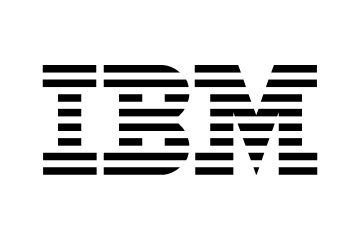 IBM is a global hybrid cloud and AI-powered
IBM is a global hybrid cloud and AI-powered  Uniphore is an enterprise-class, AI-native company that was incubated in 2008. Its enterprise-class multimodal AI and data platform unifies all elements of voice, video, text and data by leveraging Generative AI, Knowledge AI, Emotion AI and workflow automation. Some of its products include U-Self Serve, U-Assist, U-Capture, and U-Analyze. Its Q for Sale is a conversational intelligence software that guides revenue teams with AI-powered insights, offering clarity on how to effectively keep prospects engaged.
Uniphore is an enterprise-class, AI-native company that was incubated in 2008. Its enterprise-class multimodal AI and data platform unifies all elements of voice, video, text and data by leveraging Generative AI, Knowledge AI, Emotion AI and workflow automation. Some of its products include U-Self Serve, U-Assist, U-Capture, and U-Analyze. Its Q for Sale is a conversational intelligence software that guides revenue teams with AI-powered insights, offering clarity on how to effectively keep prospects engaged. Google Cloud accelerates every organisation’s ability to digitally transform its business. Its enterprise-grade solutions leverage modern technology to solve the most criticial business problems
Google Cloud accelerates every organisation’s ability to digitally transform its business. Its enterprise-grade solutions leverage modern technology to solve the most criticial business problems 
 8×8 offers out-of-the-box contact centre solutions, assisting all-size businesses to efficiently meet customer needs and preferences. It offers custom CRM integrations support and integrates effortlessly with third-party CRMs like Salesforce, Microsoft Dynamics, Zendesk, and more. Offering global support in all time zones & development teams in 5 continents, its patented geo-routing solution ensures consistent voice quality.
8×8 offers out-of-the-box contact centre solutions, assisting all-size businesses to efficiently meet customer needs and preferences. It offers custom CRM integrations support and integrates effortlessly with third-party CRMs like Salesforce, Microsoft Dynamics, Zendesk, and more. Offering global support in all time zones & development teams in 5 continents, its patented geo-routing solution ensures consistent voice quality. Sprinklr is a comprehensive enterprise software company for all customer-focused functions. With advanced AI, Sprinklr’s unified customer experience management (Unified-CXM) platform lets organisations offer human experiences to every customer, every time, across any modern channel.
Sprinklr is a comprehensive enterprise software company for all customer-focused functions. With advanced AI, Sprinklr’s unified customer experience management (Unified-CXM) platform lets organisations offer human experiences to every customer, every time, across any modern channel.
 Upland offers a comprehensive suite of contact centre and customer service solutions with products including InGenius, Panviva, Rant & Rave, and RightAnswers. InGenius enables organisations to connect their existing phone system with CRM, further enhancing agent productivity. Panviva provides compliant and omnichannel capabilities for highly regulated industries. Whereas, Rant & Rave, and RightAnswers are its AI-powered solutions,
Upland offers a comprehensive suite of contact centre and customer service solutions with products including InGenius, Panviva, Rant & Rave, and RightAnswers. InGenius enables organisations to connect their existing phone system with CRM, further enhancing agent productivity. Panviva provides compliant and omnichannel capabilities for highly regulated industries. Whereas, Rant & Rave, and RightAnswers are its AI-powered solutions,  Zoho Social, a part of Zoho’s suite of 50+ products, is a comprehensive social media management platform for businesses and agencies. The Zoho Social dashboard includes a robust set of features, such as Publishing Calendar, Bulk Scheduler, and Approval Management to offer businesses all the essential social media publishing tools. Its monitoring tools help enterprises track and respond to relevant social conversations.
Zoho Social, a part of Zoho’s suite of 50+ products, is a comprehensive social media management platform for businesses and agencies. The Zoho Social dashboard includes a robust set of features, such as Publishing Calendar, Bulk Scheduler, and Approval Management to offer businesses all the essential social media publishing tools. Its monitoring tools help enterprises track and respond to relevant social conversations. Hootsuite, headquartered in Vancouver, is a social media management platform that streamlines the process of managing multiple social media accounts. Some of its core offerings include social media content planning and publishing, audience engagement tools, analytics and social advertising. Its easy-to-integrate capabilities help marketing teams to schedule and publish social media posts efficiently.
Hootsuite, headquartered in Vancouver, is a social media management platform that streamlines the process of managing multiple social media accounts. Some of its core offerings include social media content planning and publishing, audience engagement tools, analytics and social advertising. Its easy-to-integrate capabilities help marketing teams to schedule and publish social media posts efficiently. Brandwatch enables businesses to build and scale the optimal strategy for their clients with intuitive, use-case-focused tools that are easy and quick to master. Bringing together consumer intelligence and social media management, the company helps its users react to the trends that matter, collaborate on data-driven content, shield the brand from threats and manage all the social media channels at scale.
Brandwatch enables businesses to build and scale the optimal strategy for their clients with intuitive, use-case-focused tools that are easy and quick to master. Bringing together consumer intelligence and social media management, the company helps its users react to the trends that matter, collaborate on data-driven content, shield the brand from threats and manage all the social media channels at scale. Zoho Corporation offers innovative and tailored software to help leaders grow their business. Zoho’s 55+ products aid sales and marketing, support and collaboration, finance, and recruitment requirements. Its customer analytics capabilities come with a conversational feature, Ask Zia. It enables users to ask questions and get insights in the form of reports and widgets in real-time.
Zoho Corporation offers innovative and tailored software to help leaders grow their business. Zoho’s 55+ products aid sales and marketing, support and collaboration, finance, and recruitment requirements. Its customer analytics capabilities come with a conversational feature, Ask Zia. It enables users to ask questions and get insights in the form of reports and widgets in real-time. Salesforce-owned Tableau is an AI-powered analytics and business intelligence platform, offering the breadth and depth of capabilities that serve the requirements of global enterprises in a seamless, integrated experience. Marketers can utilise generative AI models, AI-powered predictions, natural language querying, and recommendationsons.
Salesforce-owned Tableau is an AI-powered analytics and business intelligence platform, offering the breadth and depth of capabilities that serve the requirements of global enterprises in a seamless, integrated experience. Marketers can utilise generative AI models, AI-powered predictions, natural language querying, and recommendationsons. Fullstory is a behavioural data platform, helping C-suite leaders make informed decisions by injecting digital behavioural data into its analytics stack. Its patented technology uncovers the power of quality behavioural data at scale, transforming every digital visit into actionable insights. Enterprises can increase funnel conversion and identify their highest-value customers effortlessly.
Fullstory is a behavioural data platform, helping C-suite leaders make informed decisions by injecting digital behavioural data into its analytics stack. Its patented technology uncovers the power of quality behavioural data at scale, transforming every digital visit into actionable insights. Enterprises can increase funnel conversion and identify their highest-value customers effortlessly. Contentsquare is a cloud-based digital experience analytics platform, helping brands track billions of digital interactions, and turn those digital
Contentsquare is a cloud-based digital experience analytics platform, helping brands track billions of digital interactions, and turn those digital  Amplitude is a product analytics platform, enabling businesses to track visitors with the help of collaborative analytics. The platform leverages the capabilities of
Amplitude is a product analytics platform, enabling businesses to track visitors with the help of collaborative analytics. The platform leverages the capabilities of  Adobe Experience Cloud offers a comprehensive set of applications, capabilities, and services specifically designed to address day-to-day requirement for personalised customer experiences at scale. Its platform helps play an essential role in managing different digital content or assets to improve customer happiness. Its easy-to-optimise content gives users appropriate marketing streams, ensuring product awareness.
Adobe Experience Cloud offers a comprehensive set of applications, capabilities, and services specifically designed to address day-to-day requirement for personalised customer experiences at scale. Its platform helps play an essential role in managing different digital content or assets to improve customer happiness. Its easy-to-optimise content gives users appropriate marketing streams, ensuring product awareness.
 Started in 2005 in a Sweden-based small town, Norrköping, Voyado offers a customer experience cloud platform that includes a customer loyalty management system. This platform helps businesses design and implement customer loyalty programs, track customer
Started in 2005 in a Sweden-based small town, Norrköping, Voyado offers a customer experience cloud platform that includes a customer loyalty management system. This platform helps businesses design and implement customer loyalty programs, track customer  TapMango provides a comprehensive, customisable, flexible and feature-rich customer loyalty program. The loyalty tools include an integrated suite of customised consumer-facing technology, easy-to-use merchant tools, and automation algorithms, all aimed at enhancing customer experience. Adaptable to any industry, TapMango’s platform helps merchants compete with larger chains, converting customer one-time purchases into profitable spending habits.
TapMango provides a comprehensive, customisable, flexible and feature-rich customer loyalty program. The loyalty tools include an integrated suite of customised consumer-facing technology, easy-to-use merchant tools, and automation algorithms, all aimed at enhancing customer experience. Adaptable to any industry, TapMango’s platform helps merchants compete with larger chains, converting customer one-time purchases into profitable spending habits.









 Adobe Experience Cloud offers a comprehensive set of applications, capabilities, and services specifically designed to address day-to-day requirements for personalised customer experiences at scale. Its innovative platform has played an essential role in managing different digital content or assets, to improve customer happiness or satisfaction. Some of its products include Adobe Gen Studio, Experience Manager Sites, Real-time CDP, and Marketo Engage.
Adobe Experience Cloud offers a comprehensive set of applications, capabilities, and services specifically designed to address day-to-day requirements for personalised customer experiences at scale. Its innovative platform has played an essential role in managing different digital content or assets, to improve customer happiness or satisfaction. Some of its products include Adobe Gen Studio, Experience Manager Sites, Real-time CDP, and Marketo Engage.